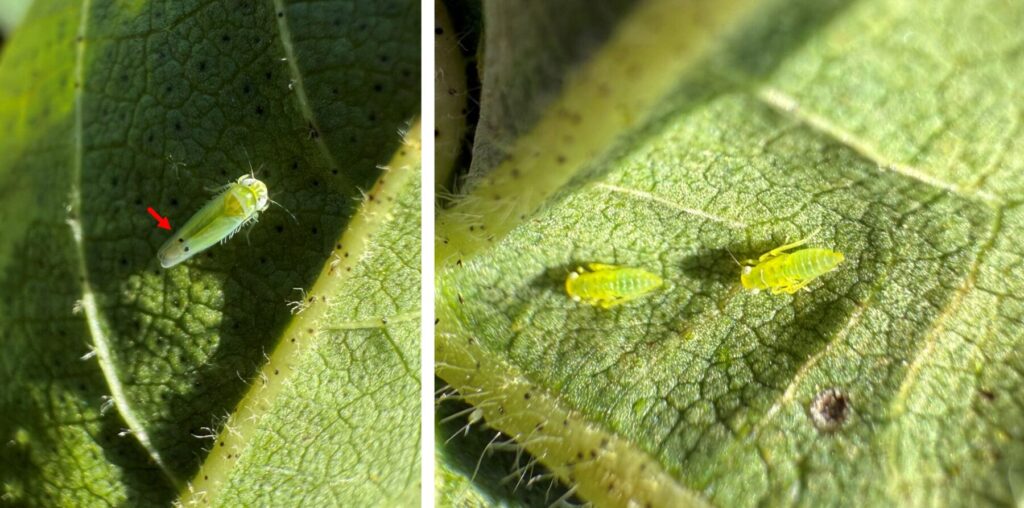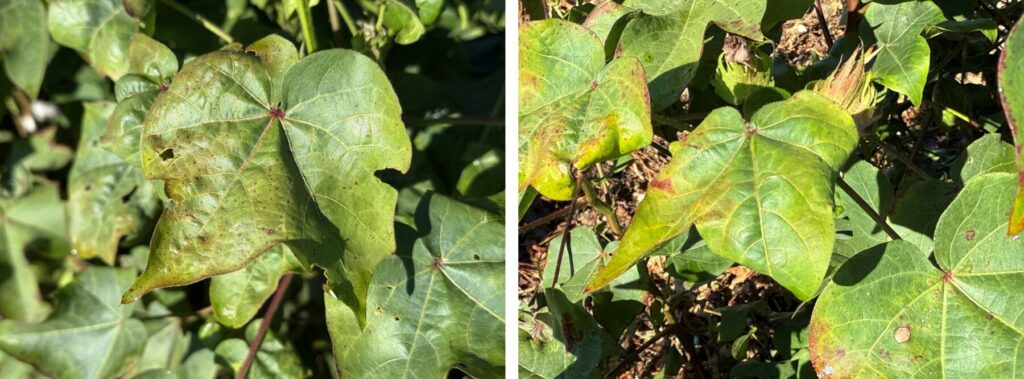Cotton Jassid, Amrasca biguttula (Fig. 1), is native to the Indian subcontinent and has become an invasive pest in Georgia. It is spreading rapidly throughout Georgia and other southeastern states. Currently, it is present in nearly all southern counties and in two counties in northwest Georgia. Adults of the two-spot cotton leafhopper are small green insects with two dark spots on their wings, and nymphs are entirely green (Fig. 1). Adults are about 3 mm long (Fig. 2). It poses a serious threat, especially to hibiscus and other malvaceous plants in ornamental nurseries. We have observed infestations in at least one wholesale and one retail nursery in South Georgia. As a significant pest, it causes over 50% crop loss in cotton.


They colonize the underside of the leaves and feed on the cells. The feeding damage gradually turns the leaves from green to yellow, and over time, they appear burned (Figs. 3 and 4). We also observed drooping of the shoots and puckering of leaves after feeding damage (Figs. 3 and 5) in hibiscus and cotton. This feeding symptom is commonly called ‘hopperburn.”
Management in ornamental nurseries
Based on trials on cotton, active ingredients such as bifenthrin (e.g., Talstar P), flonicamid (Aria), dinotefuran (Safari or Zylam), sulfoxaflor + spinetoram (XXpire), thiamethoxam (e.g., Flagship 25WG), flupyradifurone (Altus), and buprofezin (Talus) are effective. University colleagues and county agents conducted these trials.


